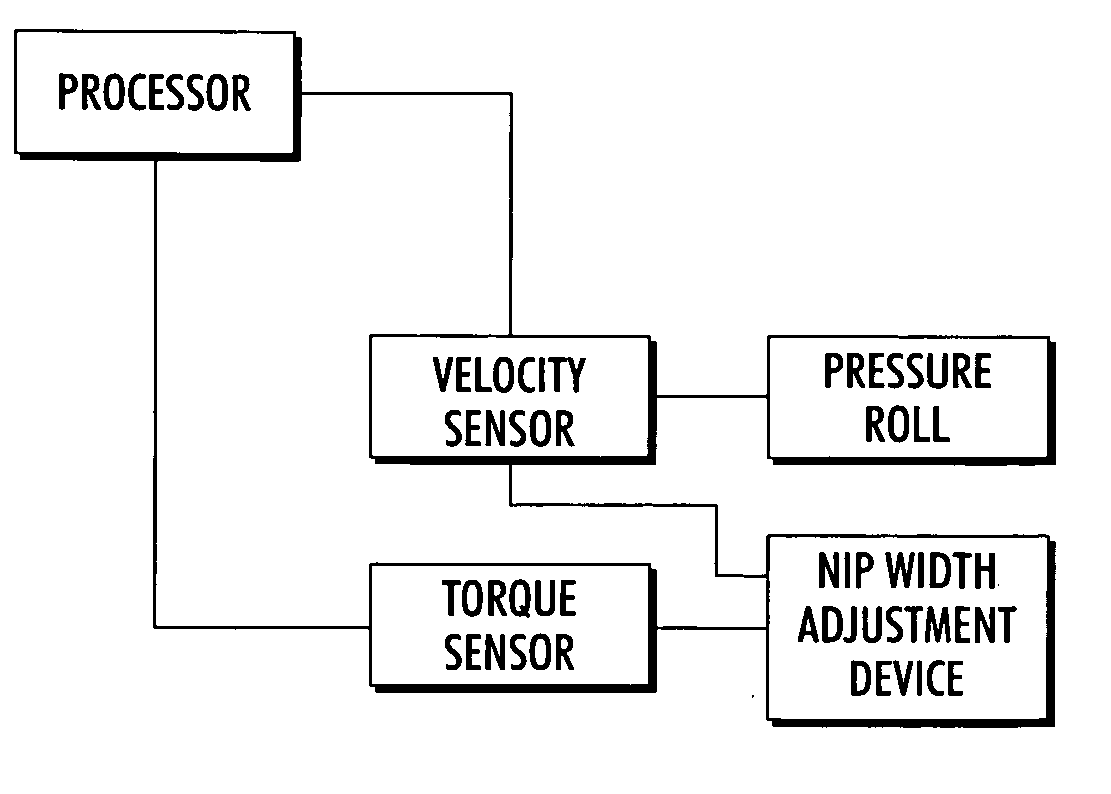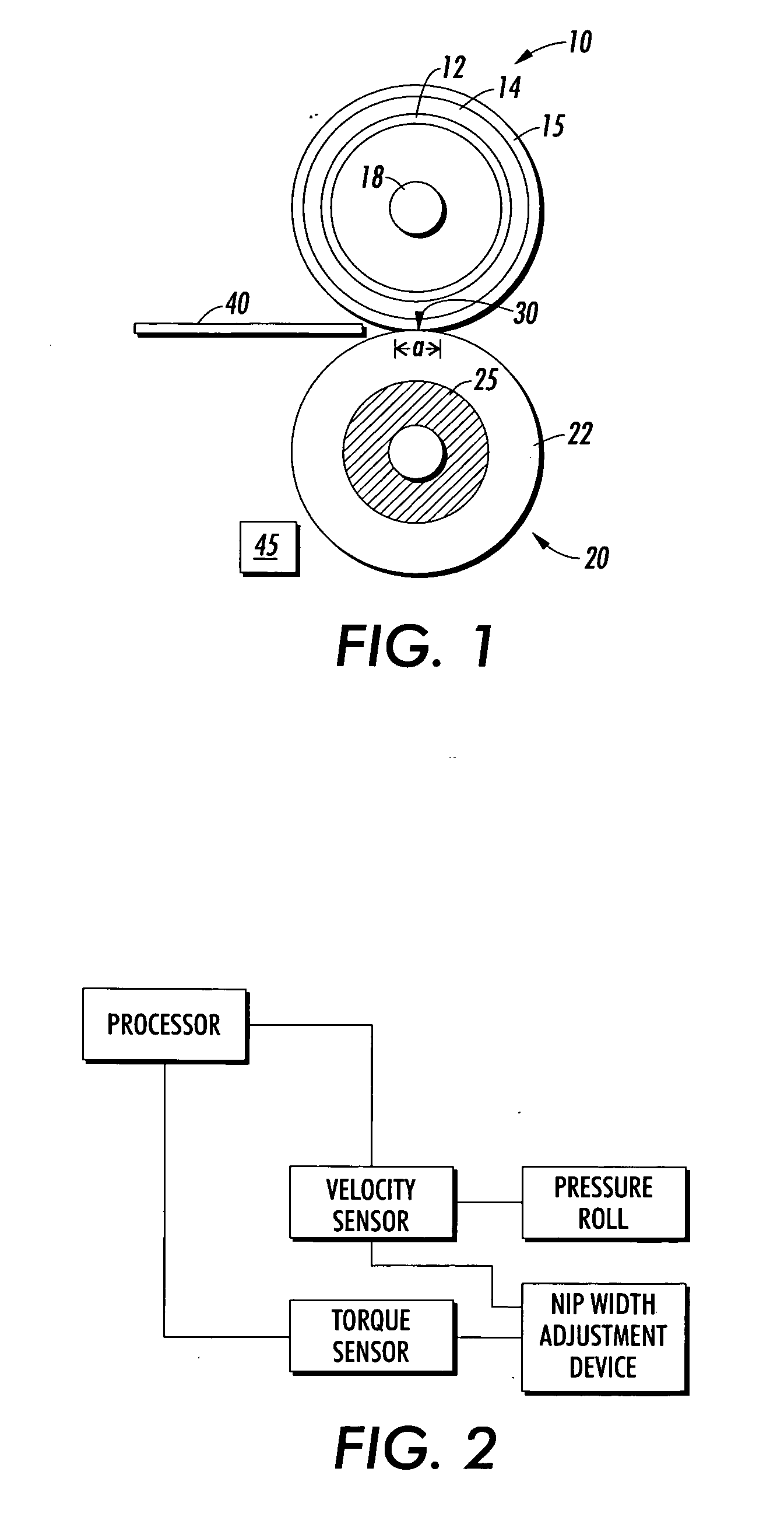Closed loop control of nip pressure in a fuser system
a closed loop control and fuser technology, applied in the field of fuser systems, can solve the problems of premature failure, large reduction of both dwell time, and nip width and nip uniformity in the fuser, and achieve the effects of large nip width, improved fusing quality on thick paper, and large nip width
- Summary
- Abstract
- Description
- Claims
- Application Information
AI Technical Summary
Benefits of technology
Problems solved by technology
Method used
Image
Examples
Embodiment Construction
[0019] As was discussed above, a typical xerographic machine includes at least a toner image forming station, a transfer station to transfer the toner image to an image receiving substrate, and a fuser system to fix the toner image to the image receiving substrate. At the toner image forming station, a latent image of an original image is developed, typically on the surface of a photoconductor or photoreceptor, using a suitable toner material. The developed toner image is then transferred to an image receiving substrate such as paper, a transparency, etc., at a transfer station. Following transfer to the image receiving substrate, the toner image must then be fixed to the image receiving substrate, which is done by a fuser system that applies heat and pressure to the substrate having the toner image thereon.
[0020] A fuser system of the present invention is comprised of a fuser member that may be comprised of, for example, a fuser roll, or a fuser belt traveling around one or more (...
PUM
 Login to View More
Login to View More Abstract
Description
Claims
Application Information
 Login to View More
Login to View More - R&D
- Intellectual Property
- Life Sciences
- Materials
- Tech Scout
- Unparalleled Data Quality
- Higher Quality Content
- 60% Fewer Hallucinations
Browse by: Latest US Patents, China's latest patents, Technical Efficacy Thesaurus, Application Domain, Technology Topic, Popular Technical Reports.
© 2025 PatSnap. All rights reserved.Legal|Privacy policy|Modern Slavery Act Transparency Statement|Sitemap|About US| Contact US: help@patsnap.com



